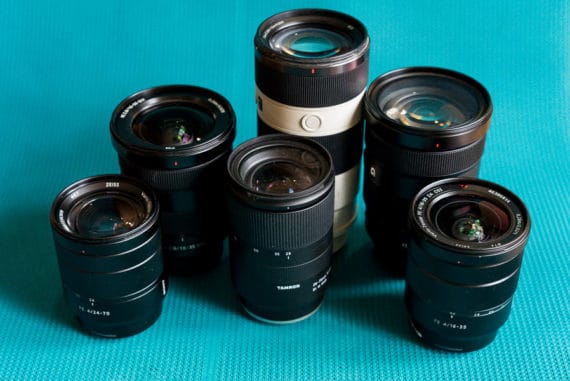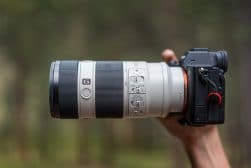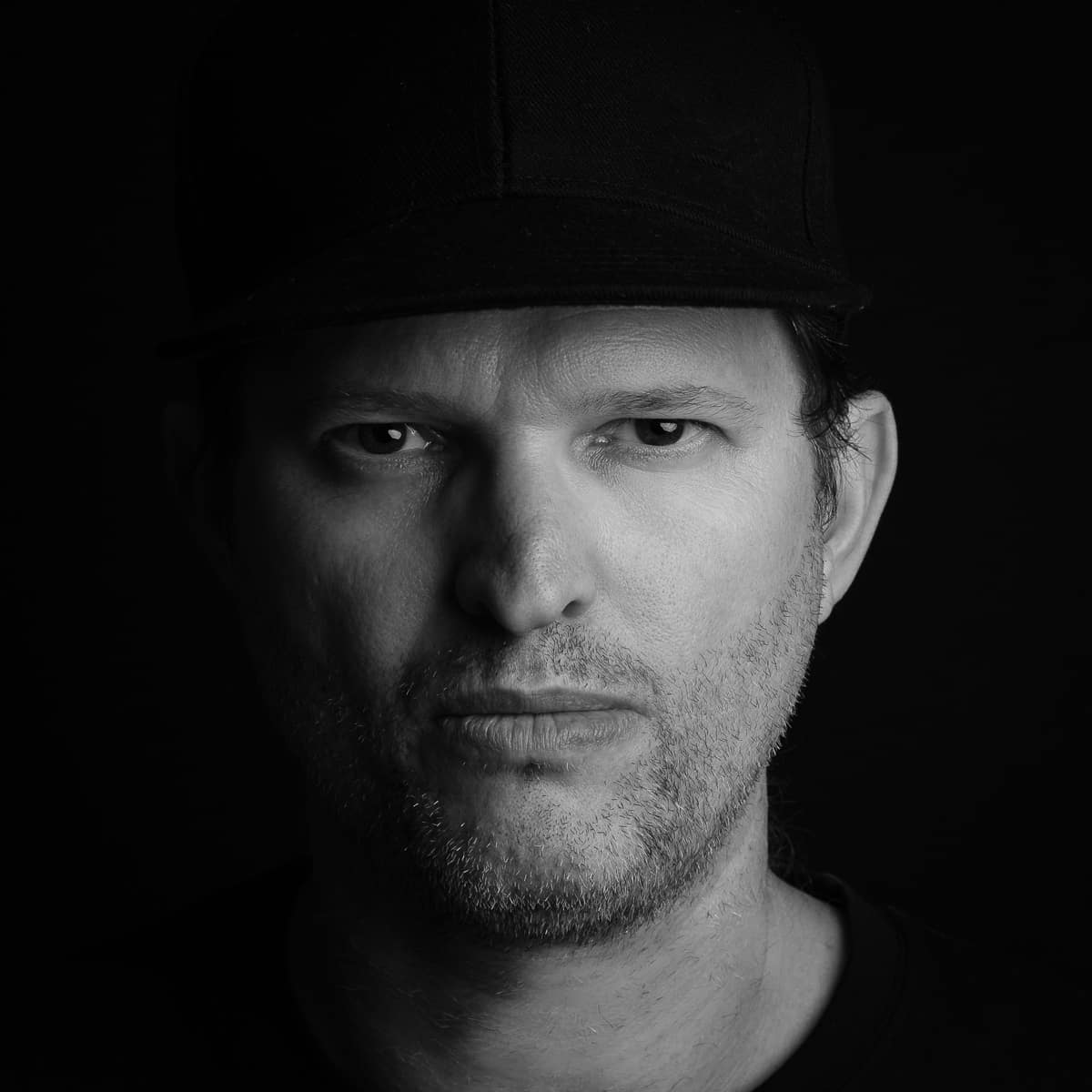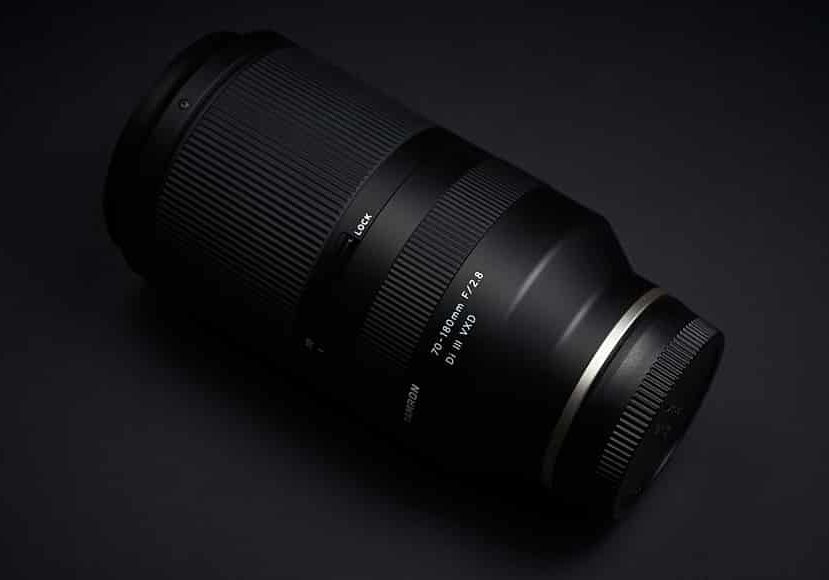
Tamron 70-180mm f/2.8 Di III VXD Lens Review
In-depth review of the Tamron 70-180mm f/2.8 Di III VXD. Find out how it stacks up in performance, image quality, value for money and more.
I don’t get many pre-release lenses, so when the opportunity arises to test one, I jump at it. When that lens is the long-awaited Tamron 70-180mm f/2.8 Di III VXD, it makes it all the more exciting.
The problem in Sonyland is that there aren’t any other real alternatives to the FE 70-200mm f/2.8 GM OSS on native Sony mount.
You will find adapted lenses, but outside of the cheaper FE 70–200mm f/4 G, there isn’t much else on the market.
I think the real appeal with lenses like the Tamron 70-180mm f/2.8 Di III VXD is their compact size when compared to their GM counterparts.
Tamron has managed to do this without compromising image quality, and do so at half the price of the Sony.
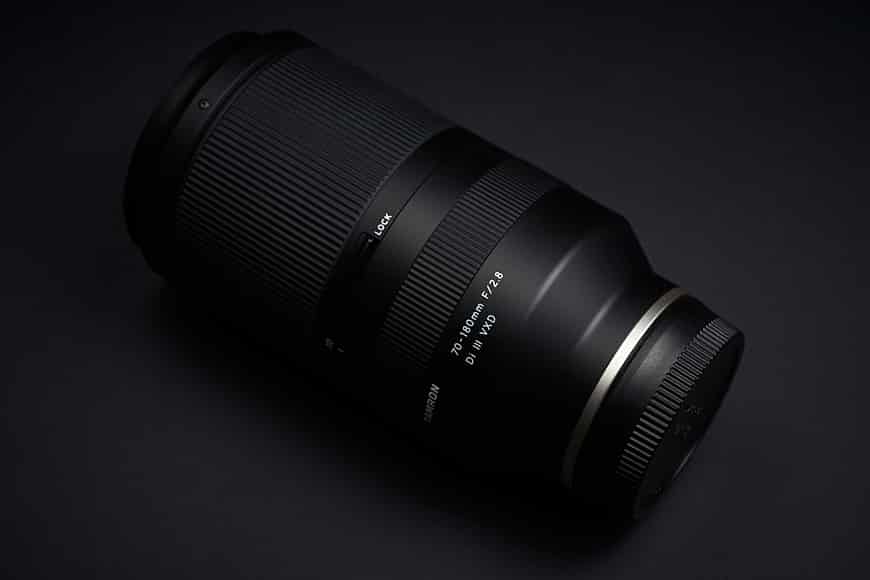
With a flexible zoom range, weather-resistant coating, and fast autofocus, this lens will quickly become a staple in your kit.
I was handed this lens by Tamron Australia who kindly loaned it to me for a week. The timing isn’t ideal with the current coronavirus situation in Australia…
As a sports and portrait photographer, I would love to have this out with my usual sports activities, or potentially take it out to some model shoots in abandoned buildings. Sadly, none of those options is available at the moment.
We could at least go out for essential exercise, which allowed me to photograph the kids.
If it seems like a tribute review to my daughters, it’s not by choice. My wife won’t let me near her with a camera, so it was either my ugly mug or the kids – who are a little more photogenic.
As a result, I had to resort to bribing my kids with studio shots, but even the bribes were not sufficient to convince my 7 yr old to take instruction, and I made the rookie mistake of giving the bribe before the photo session.
(Note to self: Negotiating terms of a parent/child bribe after the child has consumed the bribe isn’t feasible.)
All that aside, let’s take a look at how this lens performed and how it stacks up against other lenses for Sony.
Summary: Tamron 70-180mm f/2.8 Di III VXD Review
The Tamron 70-180mm f/2.8 is compact and lightweight, performs with pro-grade quality, and manages all that at an impressively low price tag. Though it does lack in-lens stabilisation, when paired with Sony IBIS, it’s not a big issue. Offering excellent image quality and a portable build, this lens exceeds expectations in almost every area.
Tamron 70-180mm f/2.8 Di III VXD Specs
- Compact size
- Image quality
- Price
- No OSS
- No switch for manual/AF
- Focal length: 70–180 mm
- Image stabilisation: No
- Lens mount: Sony FE
- Maximum aperture: f/2.8
- Aperture ring: No
- Special elements / coatings: Fluorine coating
- Minimum focus: 0.85 m (33.46″)
- Autofocus: Yes
- Motor type: Linear Motor
- Full-time manual: No
- Focus method: Internal
- Distance scale: No
- DoF scale: No
- Weight: 815 g (1.80 lb)
- Length: 149 mm (5.87″)
- Sealing: Yes
- Zoom method: Rotary (extending)
- Power zoom: No
- Zoom lock: Yes
- Filter thread: 67 mm
- Hood supplied: Yes
- Tripod collar: No
Build & Ergonomics
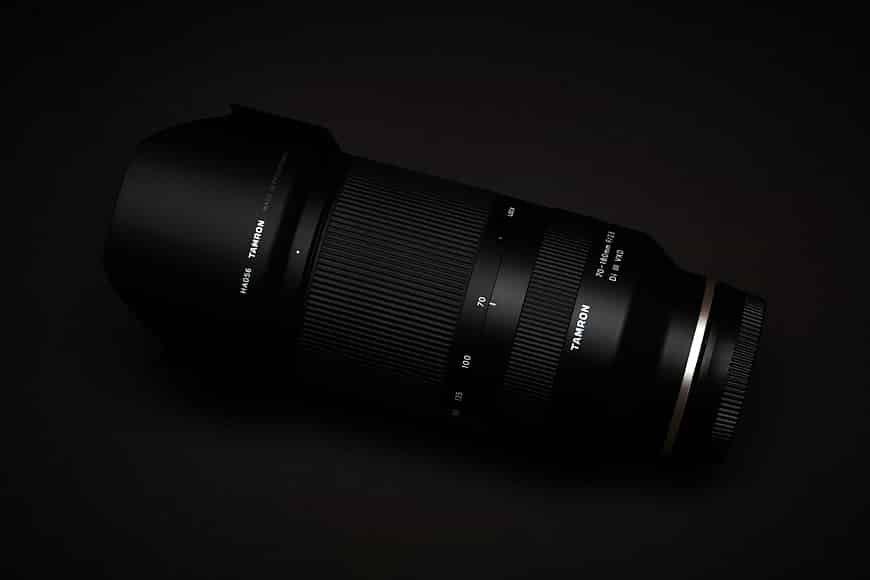
If you have the Tamron 28-75mm f/2.8 or 17-28mm f/2.8, this lens construction is relatively similar. The difference being the size of the lens and the addition of a zoom lock.
Construction of the Tamron 70-180mm f/2.8 is excellent. The lens has more substantial use of plastics over the Sony G Master or Sigma ART series lenses.
The quality of plastics used are outstanding, and it feels like a premium lens. It reminds me a little of the Nikon f/1.8 G series lenses, and is very similar in build to the Tamron 28-200mm f/2.8-5.6 Di III RXD – another stellar lens.
You could look at this as a strength or weakness, depending on your view. Most buyers of this lens will be looking for something lighter so the construction will align with that.
For those who haven’t seen this lens, the first surprise is the compact size of the glass. The front element is 67mm, and this lens is only marginally longer than a Sigma 135mm f/1.8.
That is astounding for a 70-180mm f/2.8 focal range and aperture and is matched only by the new RF Canon 70-200mm f/2.8 which is about 30% heavier.
The Tamron 70-180mm f/2.8 comes with a longish petal-style hood which has a high-quality construction. It’s better than the plastic hoods found on some of the Nikon pro glass I’ve had in the past.
The zoom mechanism is well balanced. It isn’t light enough to move with a single finger, but this also means it won’t creep at all.
Lens throw is just under a quarter of the lens circumference, making it easy to move from 70mm to 180mm. It’s short enough to be practical but long enough to move quickly to the focal length you want.
The zoom lock is only accessible at 70mm. Unlike the Sigma, it cannot be disengaged by zooming the lens.
I prefer this lock to the friction lock found on my Sony FE 100-400mm f/4.5-5.6 GM OSS which still creeps when activated.

Despite attempts to bribe my youngest, she seemed completely oblivious as to the importance of this shoot or listening to instructions. Sony a7R III + Tamron 70-180mm f/2.8 Di III VXD | 102mm | 1/125 sec | f/9 | ISO100.
There is no tripod collar. With a lens of this weight and size, it’s not necessary, and I don’t have any issue with Tamron choosing not to provide one. In my case, it would remain in the box indefinitely if it was there.
Aside from the zoom lock, the Tamron 70-180mm f/2.8 is entirely devoid of any buttons or features, much like its 28-75mm and 17-28mm counterparts. This also means a lack of stabilisation which I will cover in a separate section.
Overall, there isn’t too much to complain about on the lens. The lack of buttons may be an issue for some. My only preference would be the addition of a manual/AF switch.
Focus Performance

Thanks to Coronavirus and limited wind, trying to get sports photos with the Tamron 70-180mm f/2.8 Di III VXD was a little challenging. This photo was cropped substantially. Sony a7R III + Tamron 70-180mm f/2.8 Di III VXD | 1802mm | 1/1250 sec | f/2.8 | ISO100.
Focus performance is usually pretty easy for me to test. I’d generally head out to my local kitesurfing spot, and the only constraint would be wind.
Under the current constraints, it is a little harder, and I’ve had to resort to birds, my kids riding on bikes and a radio-controlled car. I never thought I’d be one of those photographers chasing seagulls on the beach, but here I am.
AF performance is excellent, as I would expect of a lens like this. Tamron has never been subpar in this area with this series, and the 28-75mm both had similar performance to their GM counterparts.
In the absence of a FE 70-200mm f/2.8 GM OSS to test with, I can’t make any direct comparisons, but I can say that the Tamron 70-180mm f/2.8 is fast enough for the sports-like tests I conducted. I think sports shooters would be happy with this.
The Eye-AF performance is as one would expect, and it was able to track the eye even under some challenging conditions with my kids wearing helmets.
In my bird tests, I had a couple of missed focus shots, but with birds flying directly towards the camera with busy backgrounds, this is likely to be more to do with the AF system on the a7R III not keeping up with the bird.
Stabilisation
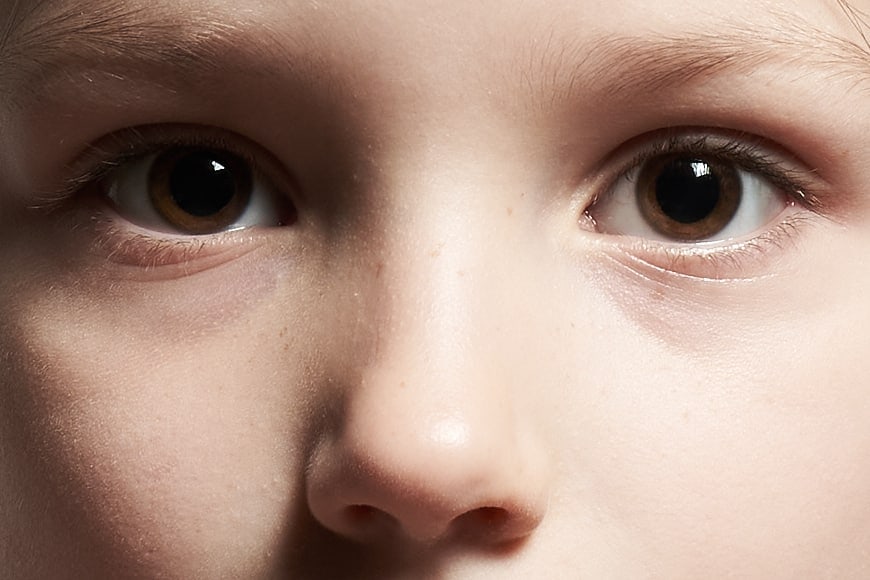
Tack sharp images are possible at 1/50 shutter with the Tamron 70-180mm f/2.8 Di III VXD thanks to sensor IBIS in modern Sony cameras. Sony a7R III + Tamron 70-180mm f/2.8 Di III VXD | 70mm | 1/50 sec | f/9 | ISO160.
The Tamron 70-180mm f/2.8 Di III VXD has no in-lens stabilisation, but it still benefits from the IBIS stabilisation. I know one of the first questions people have been asking is how good the image stabilisation is with IBIS only.
The first thing to remember is that this section has nothing to do with the Tamron as a lens. It’s all about Sony’s IBIS capability, and it should perform the same with any 180mm lens.
The second thing to consider is that this is entirely dependent on your ability to handhold a lens at low shutter speeds. I would recommend this YouTube video called “Da Grip” if you want some hints on how to stabilise a camera for lower shutter speeds.
To avoid questions about the reliability of my handholding vs that of another photographer, I decided the easiest way to do it was to make some comparisons with my Sony 100-400mm f/4.5-5.6 GM.
I took ten shots with each lens, considered the best two and put them side by side from each camera. I couldn’t get 180mm exactly on the Sony (181mm), but it’s close enough that I don’t believe it distorts the outcome.
Firstly, I’ll be open and say the examples I am showing here are extreme. Hand holding at 180mm for 1/8th of a second isn’t a realistic way of taking photos without a tripod.
At first glance, the two sets of photos are relatively similar with a slight edge to the Sony at 100%. The Sony is on the top, the Tamron is on the bottom.

At 100%, the differences between OSS+IBIS and IBIS on the Tamron 70-180mm f/2.8 Di III VXD and Sony 100-400 seem marginal.
Expand to 300%, and you can see how much better the Sony is. OSS and IBIS combined still has an advantage. My guess is that the OSS still offers about two stops of improvement over the IBIS alone.
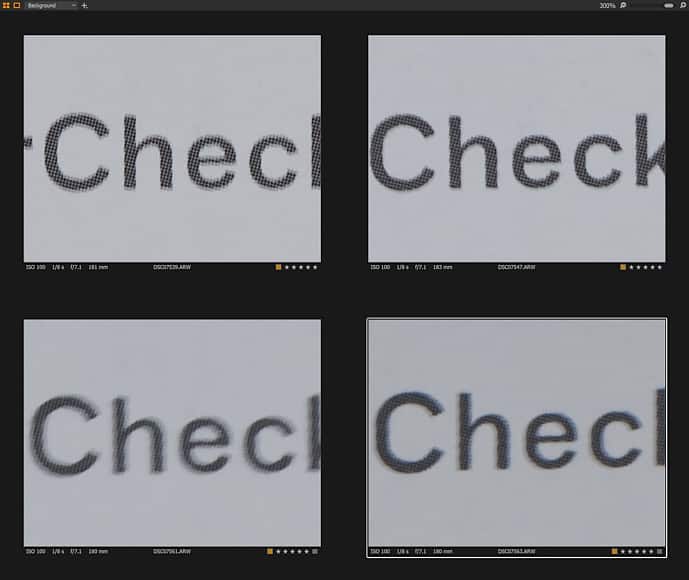
At 300%, the differences between the two are a little more evident with the Sony OSS+IBIS providing a 1-1.5 stop advantage over IBIS alone.
It’s still a good reflection of how well the Sony IBIS performs with handholding.
Image Quality
I’m not going to waste your time in this section. As a lens that is likely to be used extensively at f/2.8, the Tamron 70-180mm f/2.8 Di III VXD performs very well wide open.
The Tamron 70-180mm f/2.8 Di III VXD is very sharp wide open and only exhibits minor decreases in corner sharpness at f/2.8. Stop it down and sharpness increases substantially across the frame.
If you’re expecting this to match primes, then it’s probably an unreasonable expectation. As good as the Tamron 70-180mm is, primes have moved on a long way.
That’s not trying to take away anything from this lens. It would exceed the expectations of many professionals, let alone amateurs who will form a large portion of the buyers.
Bokeh and subject separation are good, particularly in the 130-170mm focal range. The lens starts to match the 85mm f/1.8 for subject separation.
It wasn’t able to replicate the quality of bokeh on my Zeiss Batis 85mm f/1.8, but it’s not unreasonable for a lens of this type.
Chromatic aberration, or lack thereof, is very impressive even under extreme conditions. Tamron claims that they have special lens elements optically arranged to reduce chromatic aberration.
In this case, I don’t think it’s marketing speak; it does an excellent job of controlling it. Another item Tamron did a good job of controlling is focus breathing. It’s marginal at best and this should keep prospective buyers happy.
Tamron 70-180mm f/2.8 Di III VXD Sample Images
Check out these sample images taken with the Tamron 70-180mm f/2.8:




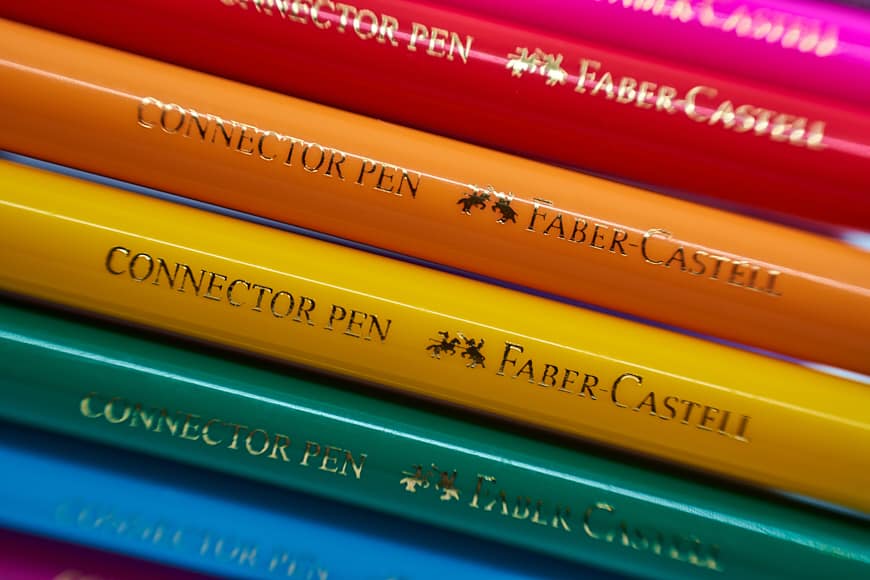

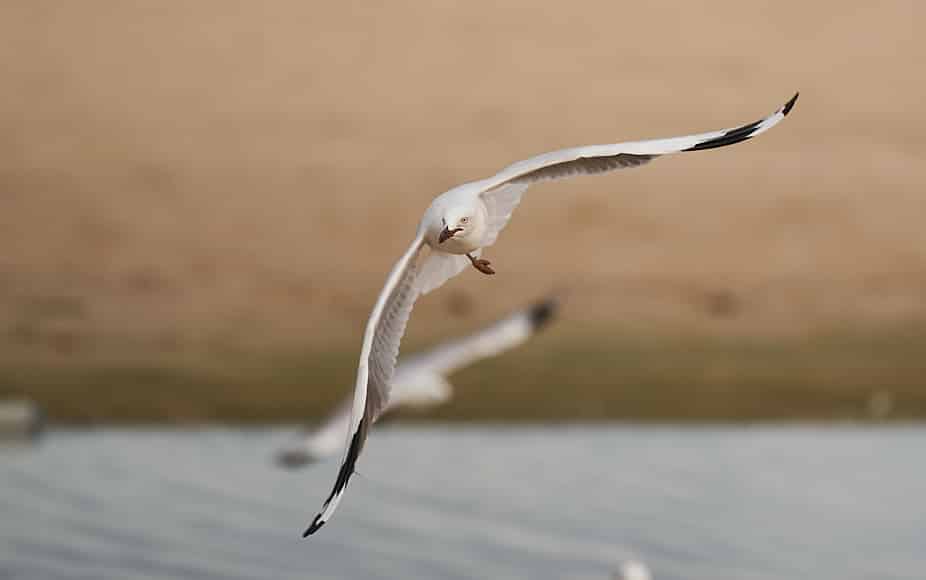
Pseudo Macro Capability
I wouldn’t usually add this section in for a non-Macro lens review, but Tamron has promoted that the Tamron 70-180mm f/2.8 Di III VXD has a 1:2 macro-like capability.
Tamron isn’t promoting this as a full macro replacement so don’t expect this to match a dedicated macro lens. Here it’s only available at 70mm and with manual focus.
If you want to use this feature, adjust to 70mm and switch to manual focus. You’ll see you can adjust the focus to nearly 30cm which is based on the flange of the lens.
30cm ultimately means that your lens will be about 10cm from the objective, which is very close. The sharpness doesn’t match a dedicated macro lens, and it would be unfair to expect this.
Overall image quality at 1:2 is surprisingly good as the example shows.
Value for Money

Stopped down to f/9, the lens is tack sharp. Sony a7R III + Tamron 70-180mm f/2.8 Di III VXD | 102mm | 1/125 sec | f/9 | ISO100.
The Tamron 70-180mm f/2.8 Di III VXD is priced in at US$1,199.
This is one of those moments where you want to let that sink in for a second because that pricing puts it in at less than half of the Sony FE 70-200mm f/2.8 GM OSS!
Buying a Sony GM lens becomes a difficult proposition, because the Tamron is outstanding.
Is the extra 20mm of the Sony worth double the price? That’s a question only you can answer.
I think the more significant competitor for Tamron is likely to be the rumoured Sigma 70-200mm and the choices are going to be split between those people that want lightweight vs metal construction and the extra 20mm that comes with the GM.

Background separation with Tamron 70-180mm f/2.8 Di III VXD is great. Sony a7R III + Tamron 70-180mm f/2.8 Di III VXD | 92mm | 1/1000 sec | f/2.8 | ISO100.
Right now, however, the Tamron is a no brainer. If the Tamron can fit an extender, and this seems like a possibility, the 70-180mm is the natural choice over the Sony. It turns the 70-200mm lens into an everyday carry option when this size doesn’t typically fall into that category.
The second big opportunity for the Tamron is prime shooters. As a prime shooter myself, I would have had a hard time justifying a lens like the GM that will only occasionally be pulled out for an event.
The Tamron 70-180mm f/2.8 pricing is comparable to a good prime, and that broadens the appeal to users like myself.
Tamron 70-180mm f/2.8 Review | Conclusion
When you get a lens like this, it’s difficult not to be impressed. I’m a prime shooter, and even I’m trying to find a way to fit this into my arsenal.
In creating the Tamron 70-180mm f/2.8 Di III VXD, they have successfully completed the trifecta.
Here is a lens that’s around $1,200 – less than half of the Sony GM counterpart – and yet it still manages to produce pro-grade quality.
That’s precisely what Tamron did with their 28-75mm f/2.8 Di III RXD and 17-28mm f/2.8 Di III RXD, and the Tamron 70-180mm f/2.8 Di III VXD extends on that legacy.
Add to that the compact size and light weight, and it’s a travellers dream. The 17-28, 28-75, 70-180 has to be the dream team when it comes to travel companions for Sony full-frame mirrorless.
When the most significant thing you can complain about is a lack of OSS or manual/AF switch, it gives you an idea of how good a lens is.

With a flexible zoom range, weather-resistant coating, and fast autofocus, this lens will quickly become a staple in your kit.







